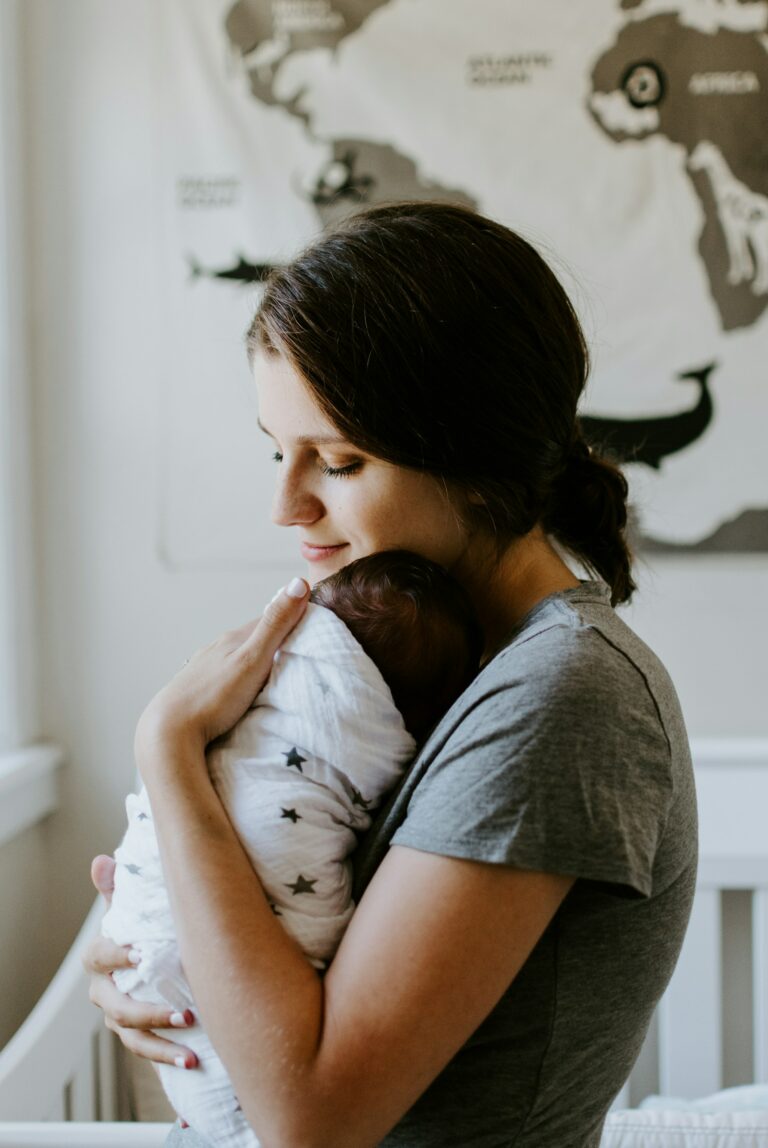Welcoming a baby often brings a beautiful chaos, yet one question seems to hover relentlessly—how much sleep does my baby truly need, and how do I even know if their patterns are healthy? Fatigue can cloud judgement; uncertainty raises anxious doubts. The baby sleep chart steps in as a companion, clarifying the unpredictable rhythms of infancy and reassuring with science-backed averages. Are you facing frequent night wakings, struggles with long naps, or just the endless balancing act between feeding and settling? A sleep chart is not about getting everything perfect but about better understanding your child’s body clock, so you respond with calm and confidence. Let’s explore together—how sleep develops, how to observe real signs, and how to adjust routines to support happier family nights.
Understanding the Sleep Chart: What Does It Really Reveal?
A baby sleep chart, at its essence, delivers a snapshot of your child’s evolving need for rest at each stage. Far from being a rigid timetable, a sleep chart adapts, just as your little one’s patterns shift from week to week. Why bother with all this tracking? Because observing total daily sleep, number of naps, and wake windows lets you identify changes early—like the sudden union of all night feeds into one giant stretch of rest (an event every parent waits for but that rarely comes on command).
You might spot classic sleepy signs—slow blinking, tiny fists rubbing the eyes, an occasional whimper before drifting off. Or maybe you’re noting changes in behaviour after a restless night. Sleep charts unite observation with real numbers, producing clarity where guesswork can mislead. Whether it’s pen and paper, a mobile app, or a printable sheet, what matters is regular tracking, which brings both routine and peace of mind.
Key features and medical explanations:
- Circadian rhythm: This internal clock, slow to mature in babies, regulates sleep and wake cycles. It reacts to light and dark, adjusting over months.
- Sleep cycles: Babies cycle between NREM (Non-Rapid Eye Movement, or “quiet sleep”) vital for bodily repair, and REM (“active sleep”), key for brain development and learning.
- Self-soothing: Over time, babies root themselves in familiar routines, learning to settle with less parental intervention.
Curious what a sleep chart looks like for different ages? Or wondering which signals truly matter? Let’s examine every stage.
Baby Sleep Through Ages: Decoding Natural Rhythms
Newborns (0–3 Months): The World of Short Naps
- Average sleep: 14–18 hours total, scattered throughout 24 hours.
- Structure: Small blocks of rest, interrupted by feeds (as often as every 2–3 hours).
- Naps: Multiple, unpredictable, sometimes as short as 30 minutes.
- Wake window: Rarely more than 35–60 minutes before drowsiness creeps in.
Medical insight: Newborn sleep is highly fragmented because the biological clock is undeveloped. Sleep is equally likely at day or night. This phase can feel endless, but is a normal part of neurological maturation.
Infants (4–12 Months): Sleep Consolidation Begins
- Total sleep: 12–16 hours per day.
- Night sleep: 9–11 hours, often with 1–2 night feedings.
- Naps: Usually 2–3 per day, gradually reducing in number but lengthening.
- Wake window: Now 60–120 minutes, increasing gradually.
Look for the start of longer night stretches. The baby sleep chart helps predict when nap transitions are coming—do you see naps getting shorter but more powerful? Regular tracking sheds light on subtle shifts, such as the first uninterrupted five-hour stretch at night.
Toddler and Preschooler Phases (1–5 Years): The Age of Independence
- 1–2 Years: 11–14 hours per day, including 1–2 naps (often shifting to a single afternoon nap after 18 months).
- 3–5 Years: 10–13 hours, with naps disappearing entirely for many by age four.
Developmental milestones—learning to walk, language booms—can trigger brief sleep regressions. Bedtime resistance or new fears (the dark, imagined monsters) may appear, and it’s not uncommon to find bedtime suddenly turning into a negotiation.
Typical baby sleep chart values at a glance:
- 0–3 months: 3–5 naps, 7–9 hours night sleep, 35–90 min wake
- 4–6 months: 3–4 naps, 8–10 hours night sleep, 1–2 hour wake
- 6–12 months: 2–3 naps, up to 11 hours night sleep, 2–3 hour wake
Remember—a chart is a compass, not a prophecy. Peaks and valleys are to be expected; the trend, not any single day, tells the real story.
How to Build and Interpret a Baby Sleep Chart
Getting Started: Consistency Meets Flexibility
The most useful baby sleep chart is the one you stick with, even if imperfectly. Track wake times, naps, feeding, and bedtime for at least a week. Does your little one show early tired cues like glazed eyes and slowing movements? Or does fussiness and crying only begin when overtiredness has already set in? Early recognition prevents “overtired spirals”—a known enemy of smooth bedtime.
- Early sleep cues: Eye rubbing, yawns, loss of interest in toys.
- Late signals: Irritability, arching back, difficulty calming down.
Charts also act as communication aids—grandparents, childcare providers, even health professionals get valuable snapshots of trends and progress.
Sleep Environment and Physiology: Little Tweaks, Big Results
Not all sleep disruptions are caused by schedule errors. A baby’s sleep is shaped by a host of variables, both inside and outside their body:
- Environment: Cool, quiet rooms signal rest. Total darkness cues melatonin release—a hormone that regulates sleep-wake cycles.
- Routine: Predictable bedtime rituals (bath, soft song, cuddles) forge strong associations with winding down.
- Feeding: Full bellies mean babies are less likely to wake out of hunger, but night feedings can still be necessary, especially during growth spurts.
Transitions, Regressions, and Parental Doubt: Science Explains the Unknown
Ever experience the so-called “4-month sleep regression”? Here, neurological leaps disrupt the status quo. Brain development, teething, illness, or even travel can shake up routines. Regular use of a baby sleep chart helps you connect the dots—was this week’s disruption linked to new teeth or a developmental leap?
Sleep regressions are a sign of maturation, not permanent setbacks. A week of chaos shouldn’t erase months of progress. Support your child with extra comfort and patience, and expect things to settle back with gentle consistency.
Strategies for Healthy Sleep: Tools That Truly Help
- Gradual self-soothing: For some families, letting baby try to resettle for short, increasing intervals (the “5-10-15” approach) is considered after 6 months—always ensuring that hunger, illness, or discomfort aren’t at play.
- Room sharing: Medical research strongly supports baby sleeping in the same room (but not the same bed) until at least six months for safety.
- White noise: Soothing static mimics the womb, helping screen out disruptive noise.
- Sleep aids: A soft cloth toy (given after 6 months, to lower risk of suffocation), familiar scents, or gentle night lights can reassure older babies.
No single method fits all. Some babies thrive on strict routines; others resist schedules and fare better with flexibility.
Scientific Safety: Sleep Hygiene That Saves Lives
Accidents during sleep are preventable. Always lay your baby on their back for every sleep—this reduces the risk of Sudden Infant Death Syndrome (SIDS), as confirmed by decades of research. A firm surface, free of loose bedding, pillows, and toys, lowers suffocation hazards. Check cords, temperature, and always prefer an uncluttered sleep space.
Room sharing (not bed sharing) is backed by paediatric organizations for at least the first six months—a simple step shown to improve outcomes.
Getting the Most from Your Baby Sleep Chart: Observe, Adjust, and Communicate
Don’t expect perfection or immediate results; expect trends. Log sleeping, feeding, and mood. Share your records with caregivers for the smoothest transitions. Link changes to events—new foods, vaccinations, travel—to make sense of sudden disruptions. Above all, revisit and update the chart as your family’s needs, and your child’s patterns, shift with time.
Digital or paper, it doesn’t matter—apps like Glow Baby or Huckleberry make tracking seamless, while printable charts or bullet journals offer tactile satisfaction.
Key Takeaways
- Sleep patterns change rapidly, yet observing and recording them using a baby sleep chart fosters knowledge, calm, and better routines.
- Recognising early sleep cues and adapting schedules help avoid overtiredness, making sleep more restful.
- Safety is non-negotiable—always place your baby on their back, use a firm sleep surface, and avoid soft objects in the crib.
- Flexibility, patience, and attentive adjustment trump rigid rules—trust your observations, and consult your paediatrician when uncertainty persists.
- For tailored advice and free child health questionnaires, you can easily access and download the Heloa app—a helpful resource for parents seeking ongoing support.
Questions Parents Ask
How do I know if my baby is getting enough sleep or too much?
Each baby has a unique sleep requirement—some may nap longer, others need less. Watch your baby’s mood: are they alert and active during wake times? Or seem dull and difficult to rouse for feeds? Oversleeping can sometimes be linked to growth spurts, but persistent sleepiness or, on the flip side, frequent fussiness and difficulty settling, might need a closer look. Tracking patterns for a few days with a baby sleep chart typically outlines if your baby fits the average range. Still worried? Discuss your details with your pediatrician for peace of mind.
Should I wake my baby from naps to protect night sleep?
Long naps sometimes push bedtime late or trigger early morning rising. If bedtime struggles or early waking becomes a routine, it may help to gently adjust the timing and length of daytime naps. It’s about balance—never forcefully wake a baby who is unwell or extremely tired, but gentle encouragement toward consistent routines often balances both nap and night sleep over time.
Why do my baby’s sleep habits change suddenly?
Sudden changes are surprisingly common. Developmental leaps, teething, illnesses, or even minor changes in routine can all disrupt established patterns. These phases are usually short-lived, even if they feel endless in the moment. Persistently disrupted sleep, especially if accompanied by symptoms like poor feeding or ongoing fussiness, warrants a consultation with your pediatrician.









